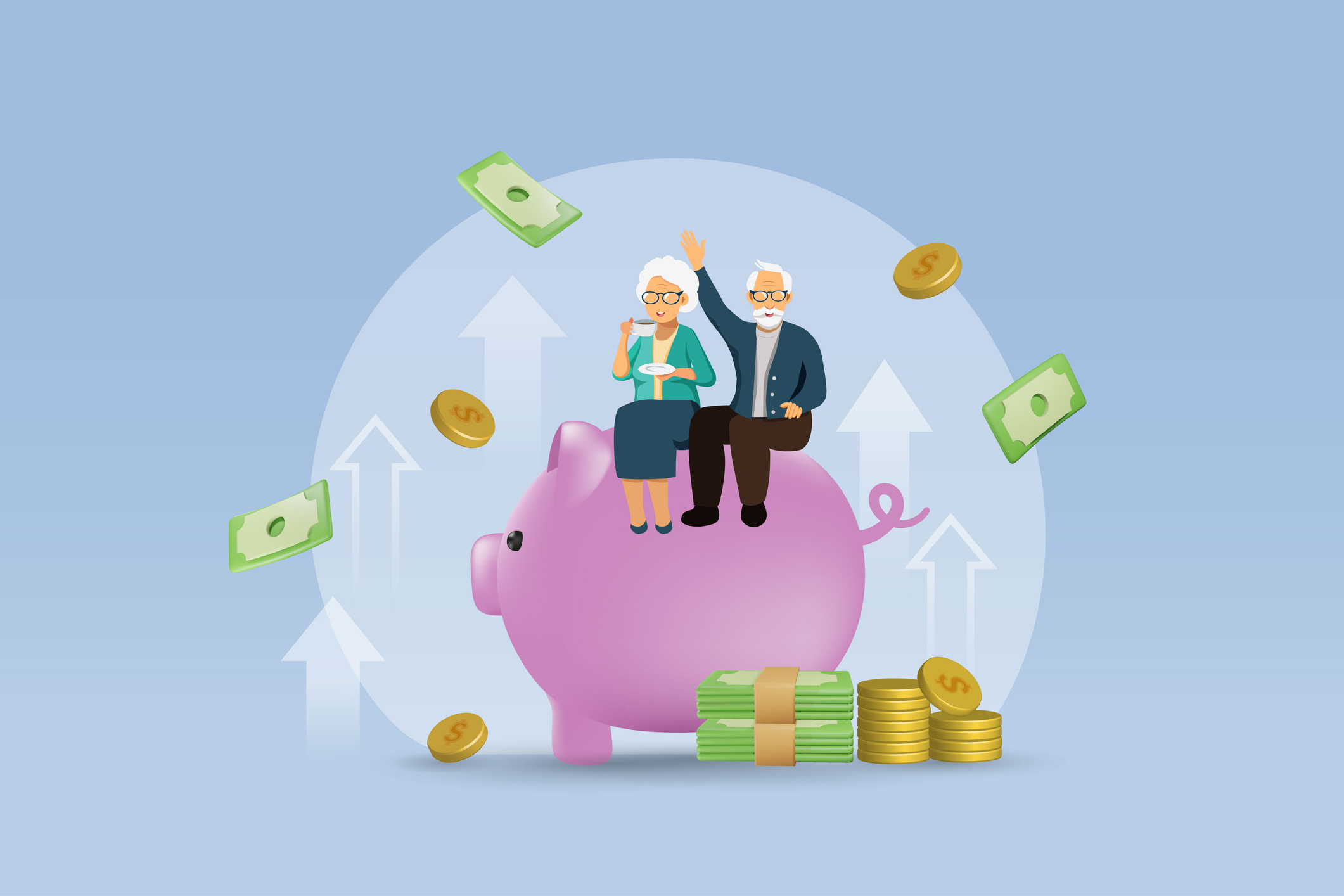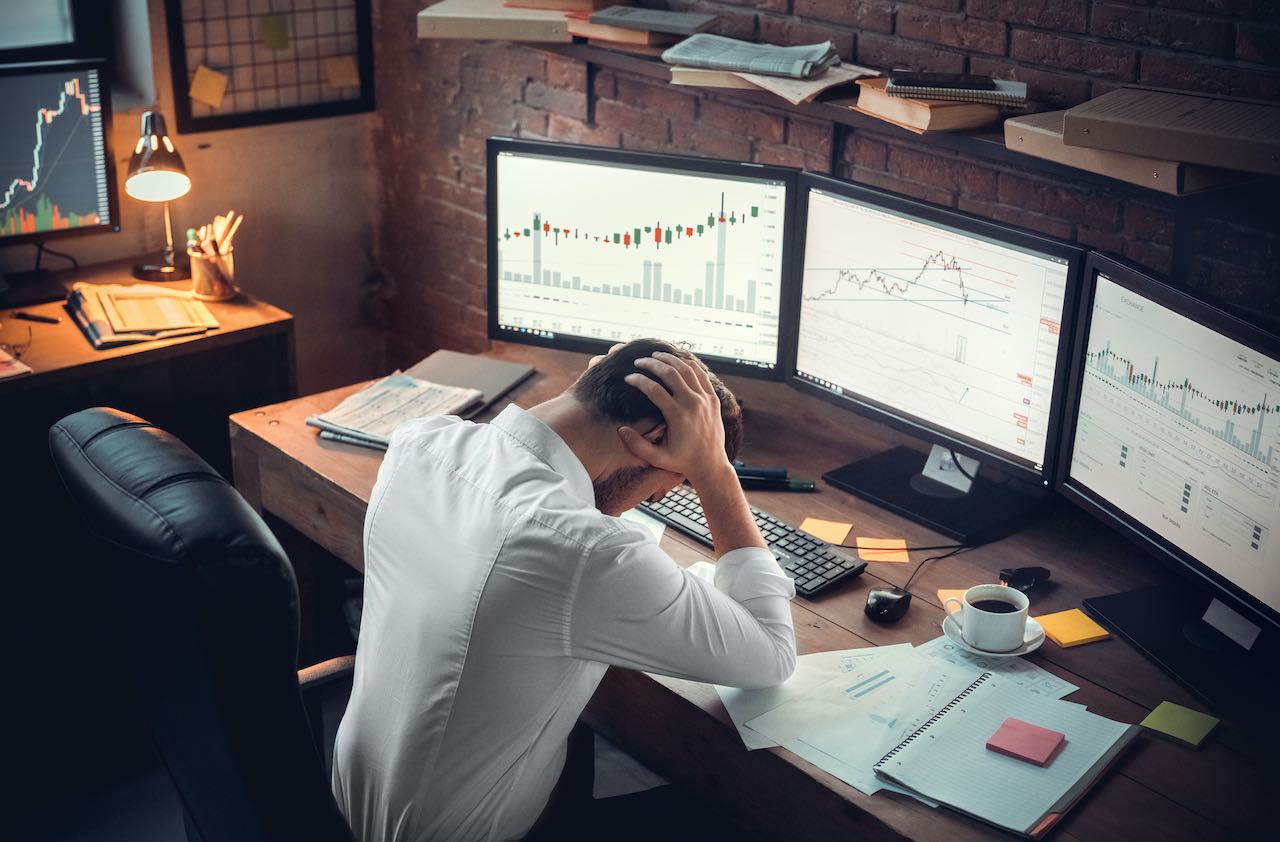Goodbye, Bear Market?
History argues most of the damage is behind us. So don’t sell your stocks until you have read this column..

Investors are about as gloomy as they get—and for good reason. Oil prices continue to soar, housing prices continue to fall, and the credit crunch continues to wreak havoc on the nation’s financial titans. Who would have thought that people would be speculating about whether shares of mortgage giants Fannie Mae and Freddie Mac could go to zero? In the midst of it all, the Federal Reserve is caught between trying to fend off inflation and defend the dollar while trying to boost the weak economy.
Believe it or not, history offers surprisingly good news about what the stock market will likely do from here. No, history doesn’t always repeat itself, but, as the saying goes, it rhymes. So please don’t cash in your stocks for CDs until you read the rest of this article. To ignore history would be folly.
On July 9, Standard & Poor’s 500-stock index finally joined other key market benchmarks in having declined by more than 20% from its October peak—officially making this a bear market.
From just $107.88 $24.99 for Kiplinger Personal Finance
Become a smarter, better informed investor. Subscribe from just $107.88 $24.99, plus get up to 4 Special Issues

Sign up for Kiplinger’s Free Newsletters
Profit and prosper with the best of expert advice on investing, taxes, retirement, personal finance and more - straight to your e-mail.
Profit and prosper with the best of expert advice - straight to your e-mail.
That prompted Sam Stovall, chief investment strategist for S&P, to research what happened after prior bear markets began. The results are surprisingly heartening.
From 1956 to 2001, the S&P experienced nine bear markets. On average, by the time the S&P entered bear territory, most of the decline was behind us. The average decline sustained during those bear markets was about 31%.
Yet, soon after the onset of a bear market, the market generally has risen. One month after breaking the 20% threshold, the S&P had gained 3%, on average, during those nine bear markets. Two months later, it had risen 6%. on average. Three months later, it was up 5%, and six months later, the S&P had returned 7%. Twelve months after the initial decline, the market had surged 17%, on average.
How can the market advance so much so quickly when stocks tumble another 11% after hitting the 20% bear market threshold? James Stack, president of InvesTech Research, says it’s because bear markets tend to be “V”-shaped in their final stages. That is, share prices tend to decline dramatically and quickly as investors capitulate, then rebound just as quickly. “Once a bear market ends, the rally out of that bottom is very sharp and very, very profitable,” Stack says.
Yes, we all know that averages and statistics can be misleading. After all, the returns above are for the average bear market. What’s to say that this will turn out to be an average bear market, with all the bad news still out there?
Twice in the past half-century, the market has experienced an extraordinary bear market. In the 1973–74 downturn, the S&P lost 43%, and in the 2000–2002 bear market, it plunged 47% (both figures include dividends; the price declines were larger). What’s more, those bear markets lingered far longer than usual. A year after the 1973–74 bear had fallen 20%, the market had dropped another 27%. A year after the 2000–2002 market entered bear territory, stocks had lost 1.2%. These were the only two bear markets since 1956 in which the S&P was lower 12 months after breaching the 20% threshold.
Good reasons for optimism
Granted, those two markets bore little resemblance to the current one. We have a whiff of stagflation. But it’s nothing compared with the double-digit inflation and sputtering economy we suffered through during much of the 1970s.
More important, those megabear markets started during periods when stocks were in the stratosphere. The S&P 500 sold at about 40 times trailing earnings before the 1973-74 bear market began and about 35 times earnings when the market peaked in early 2000. Sky-high price-earnings ratios also ruled, of course, before the 1929 crash that ushered in the Great Depression.
History tells us, moreover, that such huge bear markets have been once-in-a-generation events. The excesses that make them inevitable occur only when investors have forgotten the lessons of past selloffs. Before the most recent megabear market, the one of 2000-2002, many believed that stocks—or some types of stocks—would rise almost indefinitely. Remember the book “Dow 36,000,” published in 1999? There was none of that exuberance when the last bull market peaked, on October 9, 2007.
At that point, the market sold at 19 times earnings—not cheap but hardly irrationally expensive. So far, this bear market has unfolded exactly as the past nine did. On average, the nine crossed the 20% decline point nine months after beginning their decline. We’re right on schedule. The past bear markets lasted, on average, another five months.
Do things seem worse than they were during other bear markets? If so, it’s partly because of our tendency to forget the distant past and focus instead on the recent past. I submit that the events surrounding many past bear markets were at least as frightening as those of this one. I certainly remember the anxiety surrounding the 1987 crash, when the Dow Jones industrial average plunged 22.6% in one day—eclipsing the 1929 crash. I thought we might well enter a depression. Instead, stocks hit bottom less than two months later.
Moreover, unlike most bear markets, much of the damage thus far has occurred right on Wall Street—think of the collapse of Bear Stearns. I think that colors the flow of news and analysis coming out of the nation’s media capital, New York City.
The bear market this one resembles most is the one that occurred in 1990, when stocks tumbled 20% in three months. That one coincided with a financial collapse marked by the failure of thousands of savings and loans. Banks saw their stock prices eviscerated, and many talented value fund managers put up truly rotten numbers, just as has happened this time.
None of this is to say that the market will soon reverse course and head straight up. “History should be looked upon as a guide and not as gospel,” Stovall says. Indeed, he adds, “We think any rally is likely to fail and that the indices will eventually extend their bear-market losses.” I agree. My hunch is that the market will decline another 10% or so before it hits bottom.
But also remember the counsel of the Sir John Templeton, the pioneer of foreign mutual funds and a brilliant investor, who died on July 8 at the age of 95. “The most dangerous four words in investing are, ‘This time is different,’ ” he said.
Steven T. Goldberg (bio) is an investment adviser and freelance writer.
Profit and prosper with the best of Kiplinger's advice on investing, taxes, retirement, personal finance and much more. Delivered daily. Enter your email in the box and click Sign Me Up.

-
 How Much a $100k Jumbo CD Earns You
How Much a $100k Jumbo CD Earns YouYou might be surprised at how fast a jumbo CD helps you reach your goals.
-
 How Charitable Trusts Benefit You and Your Favorite Charities
How Charitable Trusts Benefit You and Your Favorite CharitiesThese dual-purpose tools let affluent families combine philanthropic goals with advanced tax planning to generate income, reduce estate taxes and preserve wealth.
-
 A 5-Step Plan for Parents of Children With Special Needs
A 5-Step Plan for Parents of Children With Special NeedsGuidance to help ensure your child's needs are supported now and in the future – while protecting your own financial well-being.
-
 ESG Gives Russia the Cold Shoulder, Too
ESG Gives Russia the Cold Shoulder, TooESG MSCI jumped on the Russia dogpile this week, reducing the country's ESG government rating to the lowest possible level.
-
 Morningstar Fund Ratings Adopt a Stricter Curve
Morningstar Fund Ratings Adopt a Stricter Curveinvesting Morningstar is in the middle of revamping its fund analysts' methodology. Can they beat the indices?
-
 Market Timing: The Importance of Doing Nothing
Market Timing: The Importance of Doing NothingInvestor Psychology Investors, as a whole, actually earn less than the funds that they invest in. Here’s how to avoid that fate.
-
 Commission-Free Trades: A Bad Deal for Investors
Commission-Free Trades: A Bad Deal for Investorsinvesting Four of the biggest online brokers just cut their commissions to $0 per transaction. Be careful, or you could be a big loser.
-
 Vanguard Dividend Growth Reopens. Enter at Will.
Vanguard Dividend Growth Reopens. Enter at Will.investing Why you should consider investing in this terrific fund now.
-
 Health Care Stocks: Buy Them While They're Down
Health Care Stocks: Buy Them While They're Downinvesting Why this sector should outperform for years to come
-
 Buy Marijuana Stocks Now? You'd Have to Be Stoned.
Buy Marijuana Stocks Now? You'd Have to Be Stoned.stocks Don't let your investment dollars go to pot
-
 4 Valuable Lessons From the 10-Year Bull Market
4 Valuable Lessons From the 10-Year Bull MarketInvestor Psychology Anything can happen next, so you must be mentally prepared.